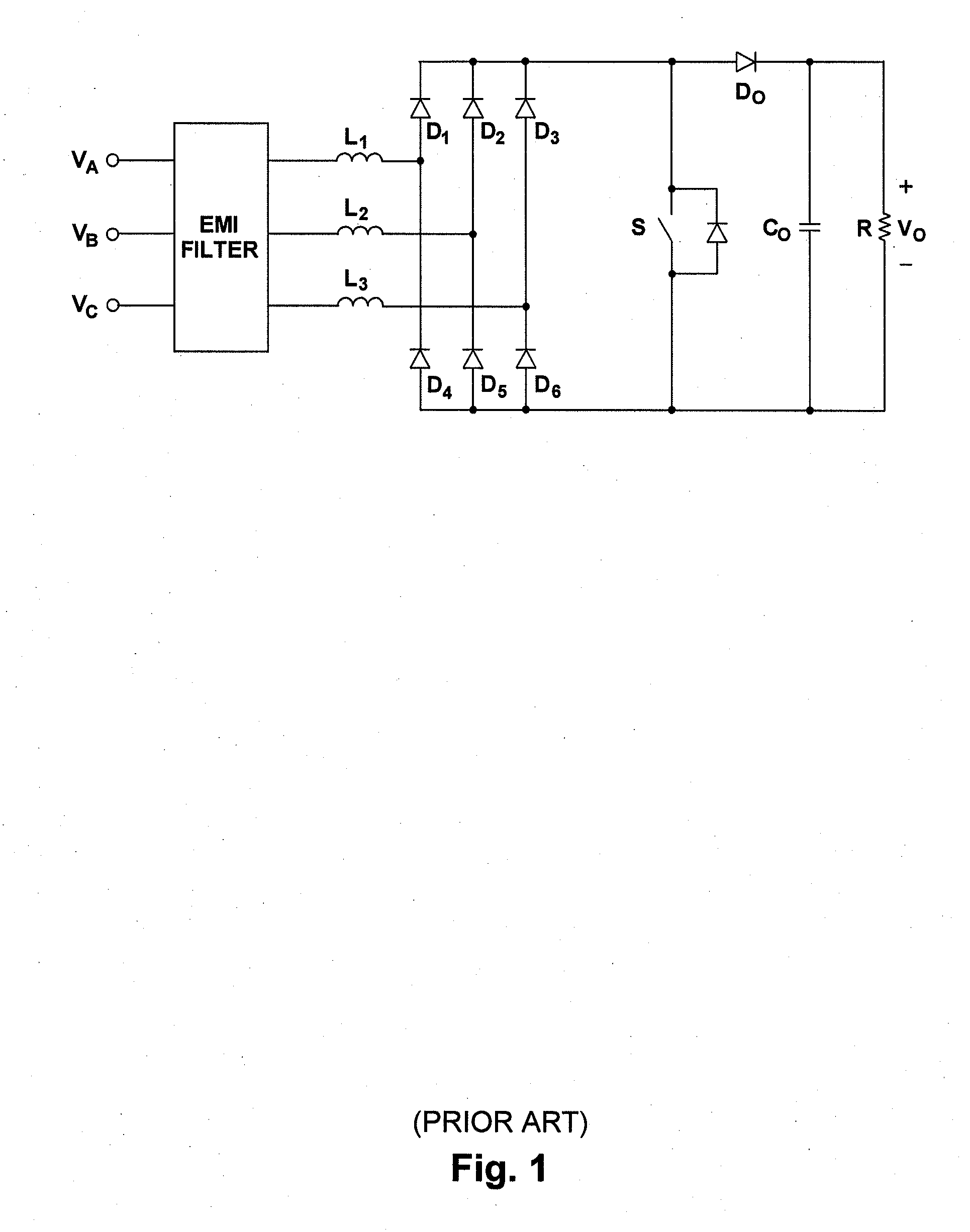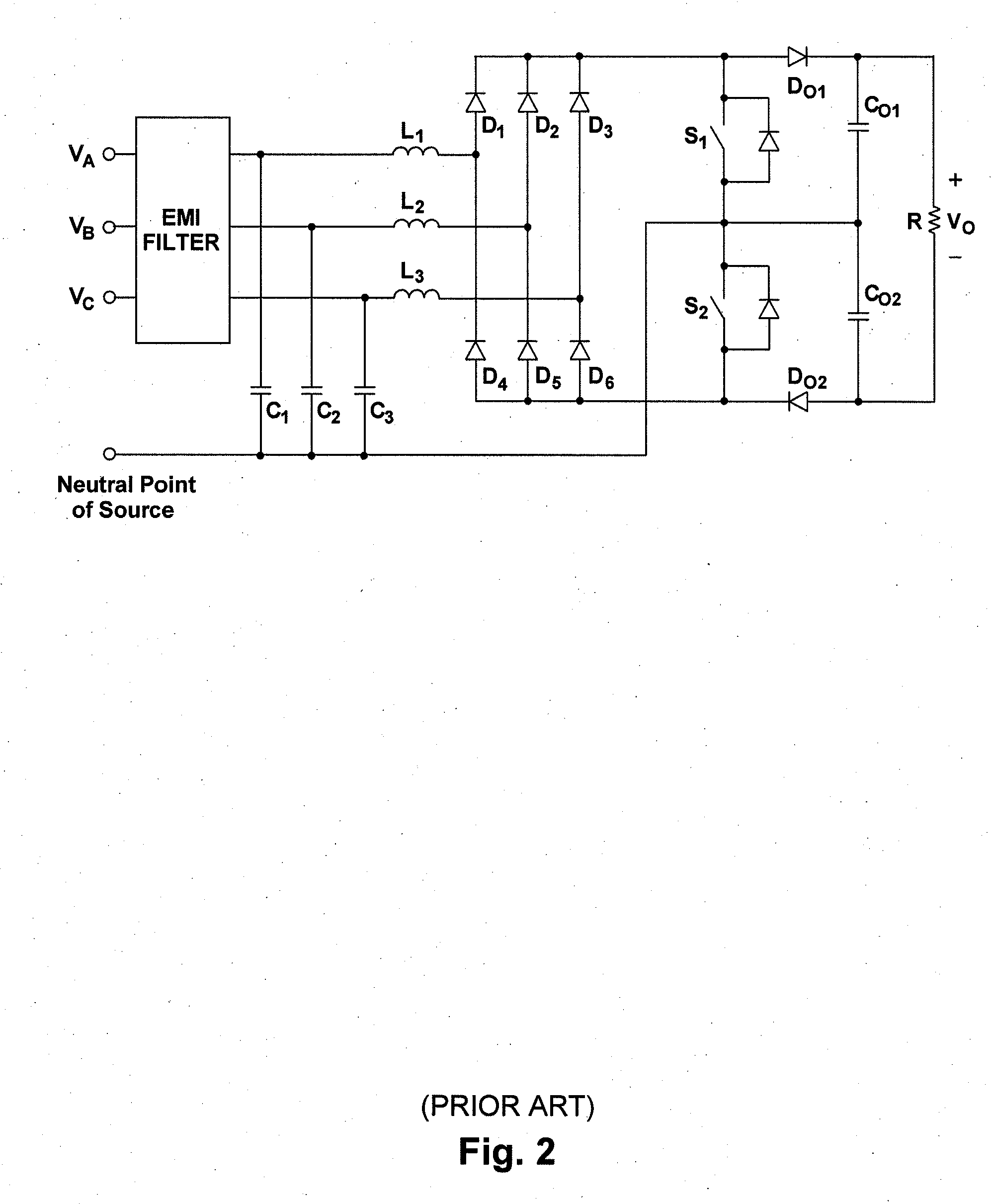Three-phase soft-switched pfc rectifiers
a pfc rectifier, three-phase technology, applied in the field of frontend rectifiers, can solve the problems of introducing a distortion in the average phase current, reducing the efficiency of thd,
- Summary
- Abstract
- Description
- Claims
- Application Information
AI Technical Summary
Benefits of technology
Problems solved by technology
Method used
Image
Examples
Embodiment Construction
[0073]The present invention relates to three-phase rectifier implementations that offer a low THD of the input currents and high PF along with soft-switching of the switches in a wide load range. Non-isolated and isolated implementations are described below. Non-isolated implementations may offer reduced common-mode noise and automatic balancing of the split capacitors when serially-connected downstream converters are employed. Isolated implementations may provide galvanic isolation of the output from the input side. Moreover, by employing an additional phase-shift or pulse-width-modulation (PWM) control with added switches, the isolated implementations can tightly control their output voltages to minimize unnecessary voltage ripples. Circuits may also be interleaved to reduce their current and voltage ripples.
[0074]FIG. 6 shows a block diagram of a three-phase two-switch ZVS PFC DCM low input-current harmonic boost rectifier according to an embodiment of the present invention. The ...
PUM
 Login to View More
Login to View More Abstract
Description
Claims
Application Information
 Login to View More
Login to View More - R&D
- Intellectual Property
- Life Sciences
- Materials
- Tech Scout
- Unparalleled Data Quality
- Higher Quality Content
- 60% Fewer Hallucinations
Browse by: Latest US Patents, China's latest patents, Technical Efficacy Thesaurus, Application Domain, Technology Topic, Popular Technical Reports.
© 2025 PatSnap. All rights reserved.Legal|Privacy policy|Modern Slavery Act Transparency Statement|Sitemap|About US| Contact US: help@patsnap.com



